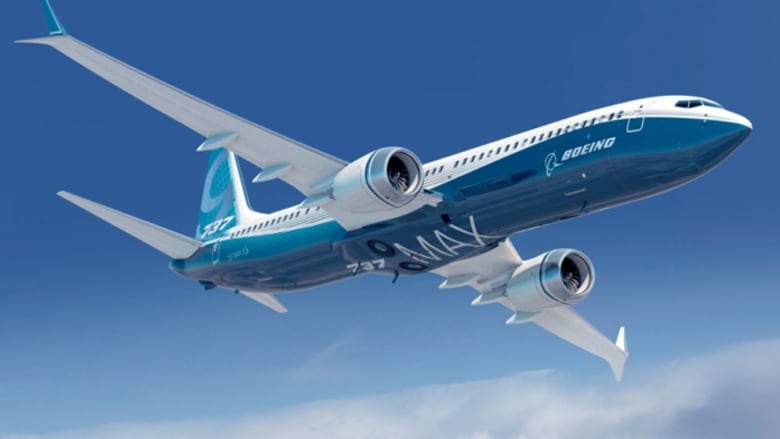
This article is more than
6 year oldWhat we know about the Boeing 737 MAX 8

Boeing said it is sending a technical team to the site of the crash of an Ethiopian Airlines flight that killed 157 people, including 18 Canadians, following another recent crash in Indonesia of the new, popular airplane model, the 737 MAX 8.
The 737 MAX 8 plane crashed Sunday shortly after takeoff from Bole airport in Ethiopia's capital Addis Ababa en route to Nairobi on Sunday.
The aircraft was also involved in a Lion Air crash in October when a two-month-old plane plunged into the Java Sea minutes after taking off from Jakarta, Indonesia, killing 189 people.
In Canada, Air Canada, WestJet and Sunwing use the aircraft — Air Canada said the model has performed safely and reliably, and WestJet said it will not speculate on the cause of the incident.
Air Canada said it has offered its assistance in the investigation. The airline said it has operated the same type of passenger jet since 2017, when the model entered commercial use, and currently has 24 in its fleet.
"These aircraft have performed excellently from a safety, reliability and customer satisfaction perspective," an Air Canada spokesperson said in an emailed statement to CBC News.
WestJet said it has 13 of the Boeing 737 MAX 8 in its fleet.
Sunwing flies four 737 MAX 8 airplanes. The company did not immediately respond to requests for comment.
Ethiopian authorities said the pilot in Sunday's crash sent out a distress call and was given clearance to return.
Records show the plane was new and had been delivered to the airline in November.
Questions about aircraft model
Sunday's crash is likely to renew questions about the 737 MAX 8.
First entered into service in 2017, the MAX single-aisle aircraft is one of Boeing's fastest-selling models yet. A new engine, the LEAP-1B, helps make the plane 14 per cent more fuel efficient than the previous version.
By the end of January, Boeing had delivered 350 MAX jets to clients out of a total order tally of 5,011 aircraft.

Indonesian investigators have not determined a cause for the October crash in Indonesia, but days after the accident Boeing sent a notice to airlines that faulty information from a sensor could cause the plane to automatically point the nose down. The notice reminded pilots of the procedure for handling such a situation.
The Lion Air cockpit data recorder showed that the jet's airspeed indicator had malfunctioned on its last four flights, though the airline initially said problems with the aircraft had been fixed before it left the Indonesian capital of Jakarta.
Read More (...)




